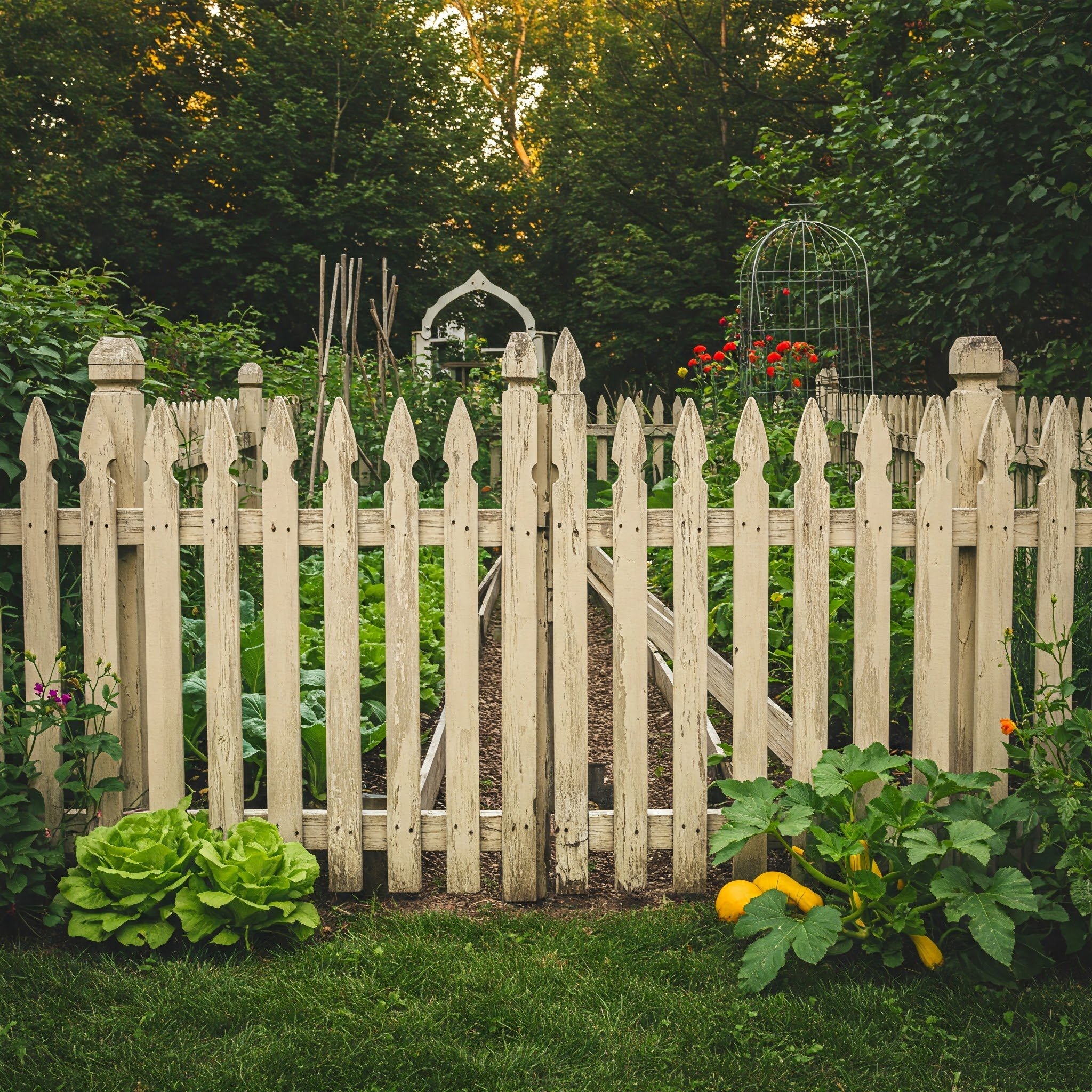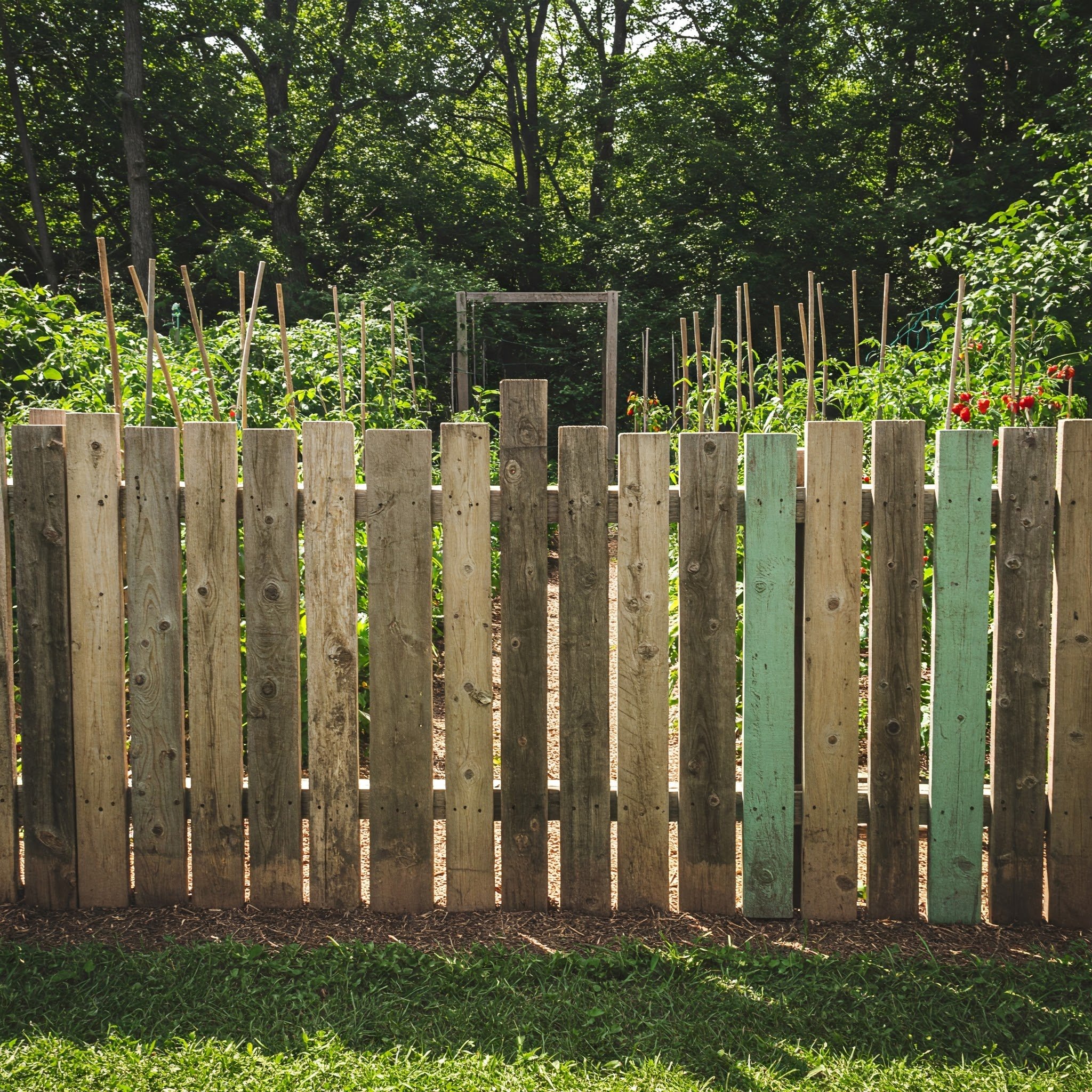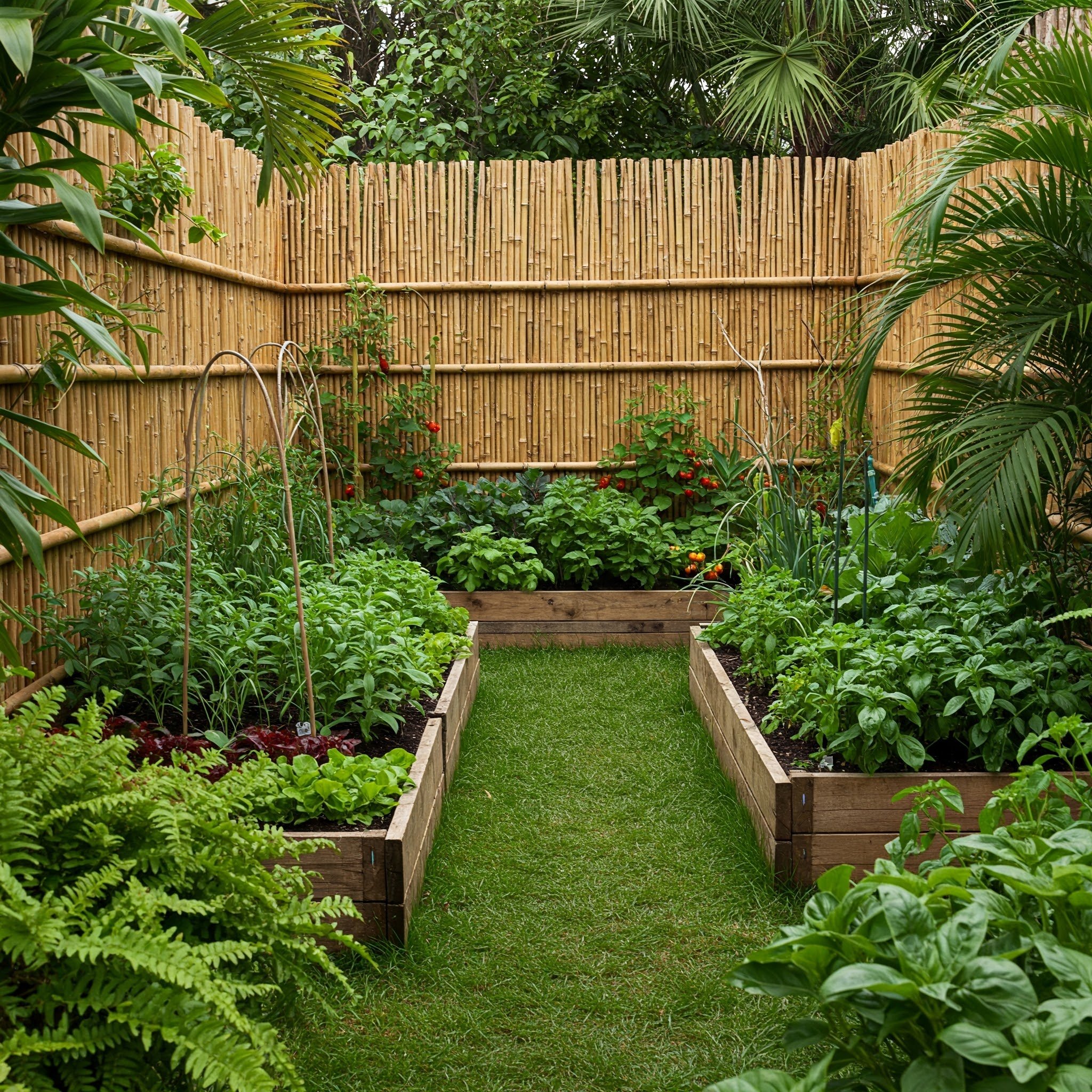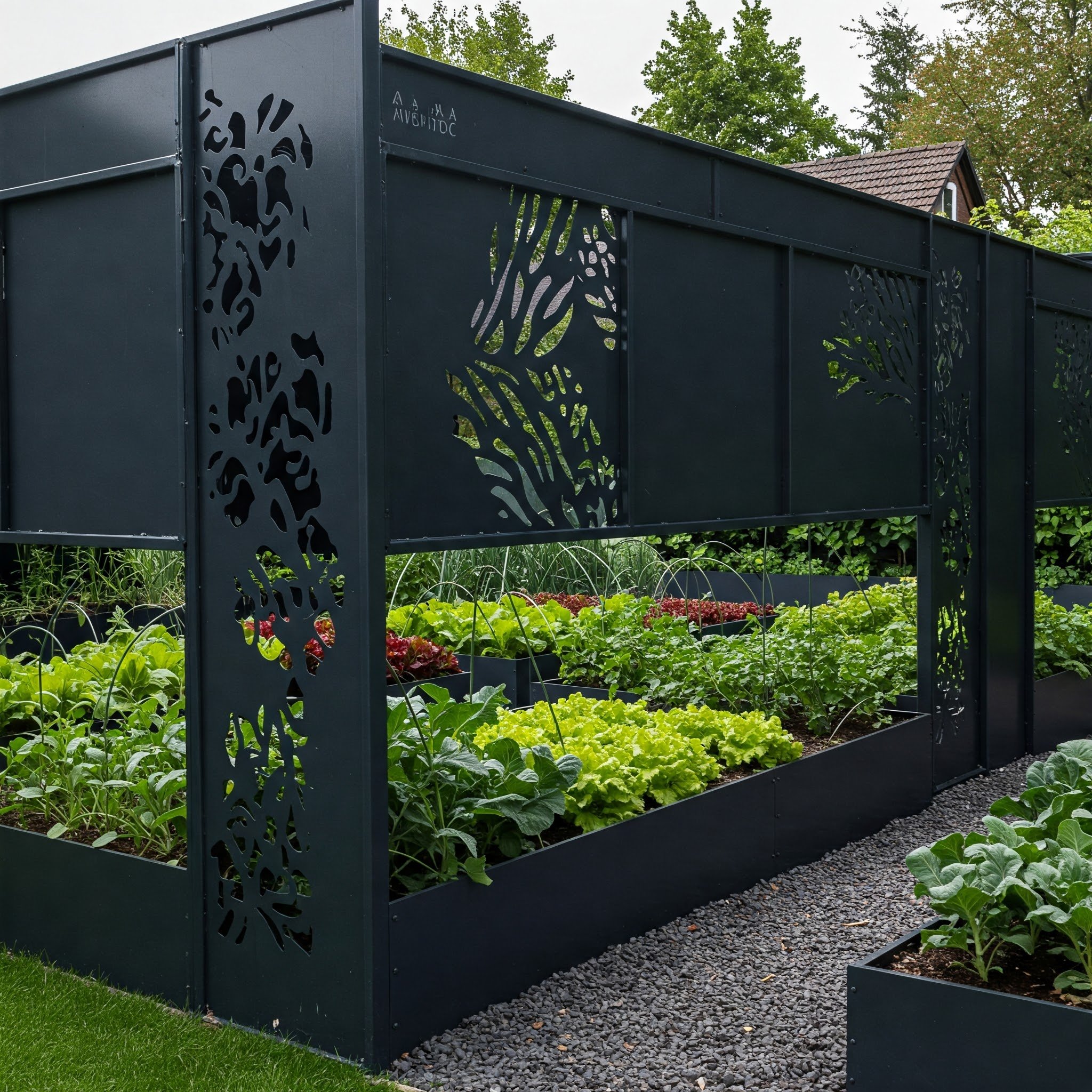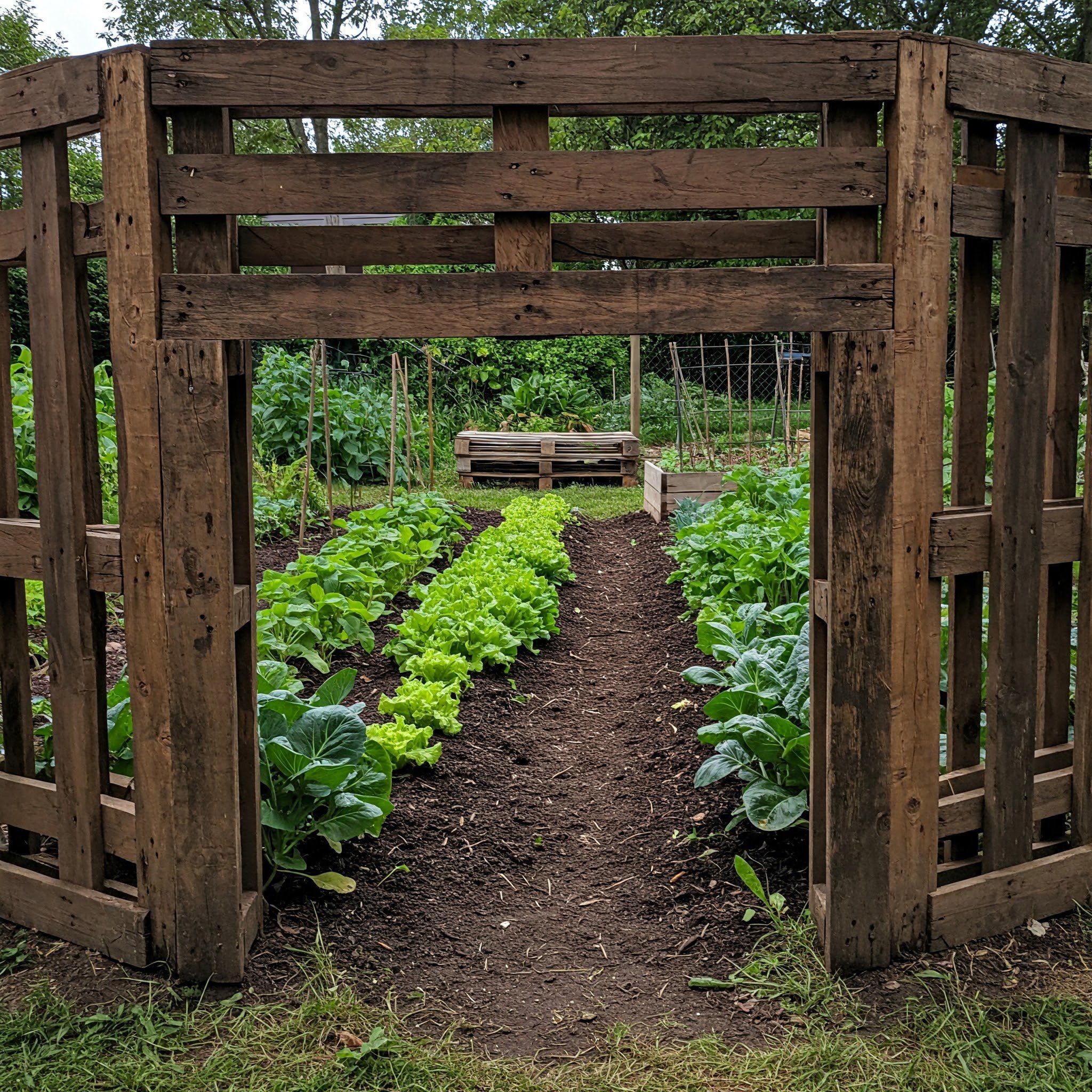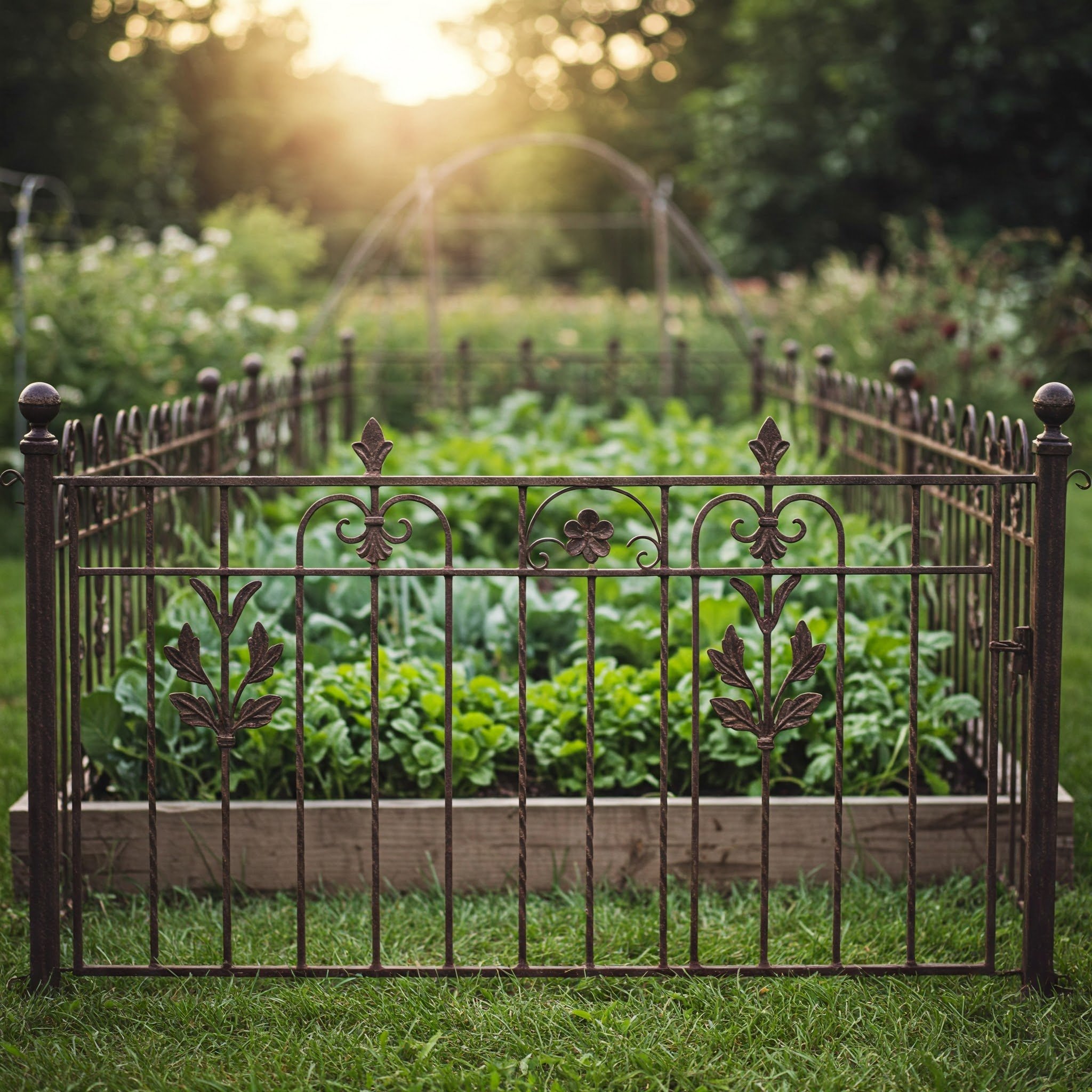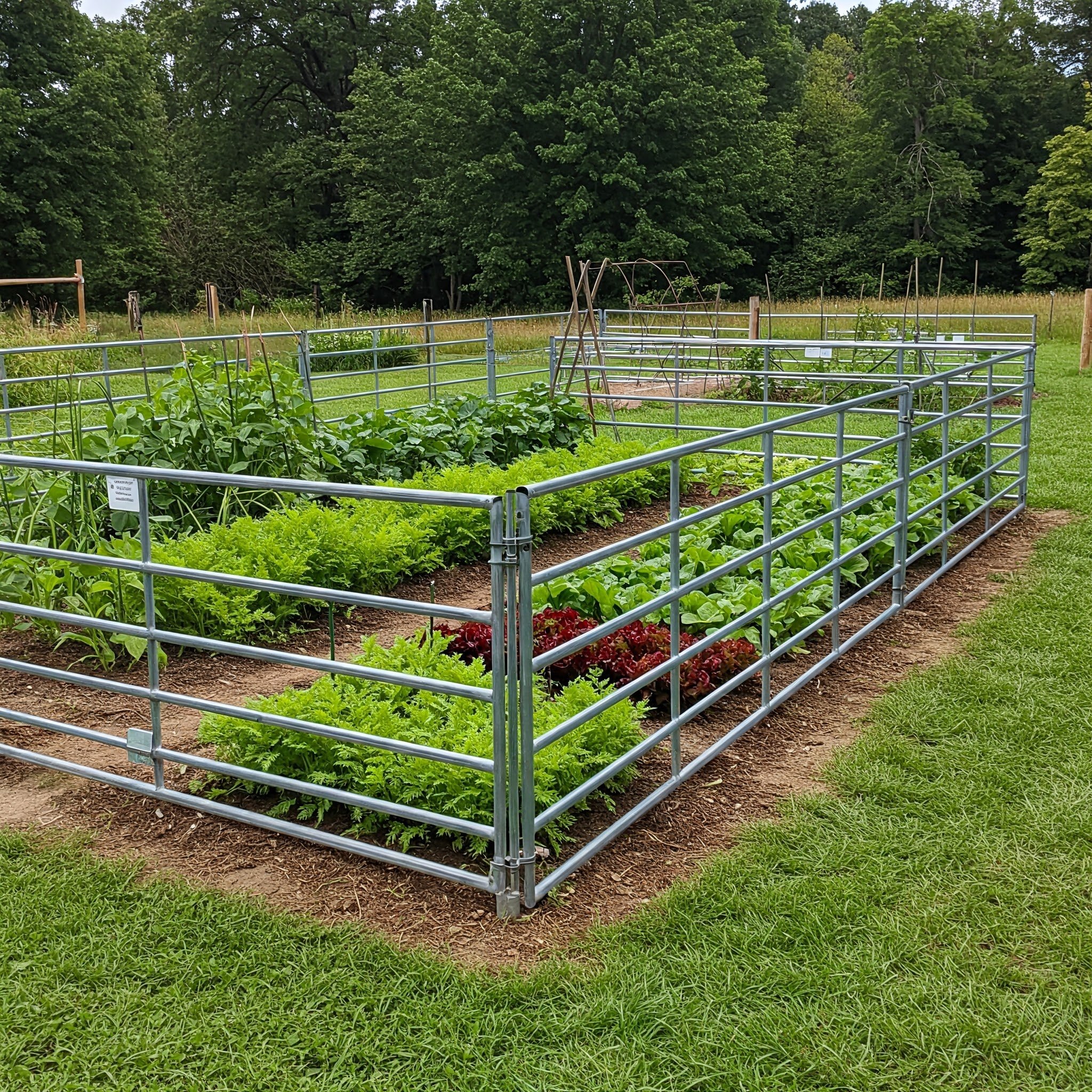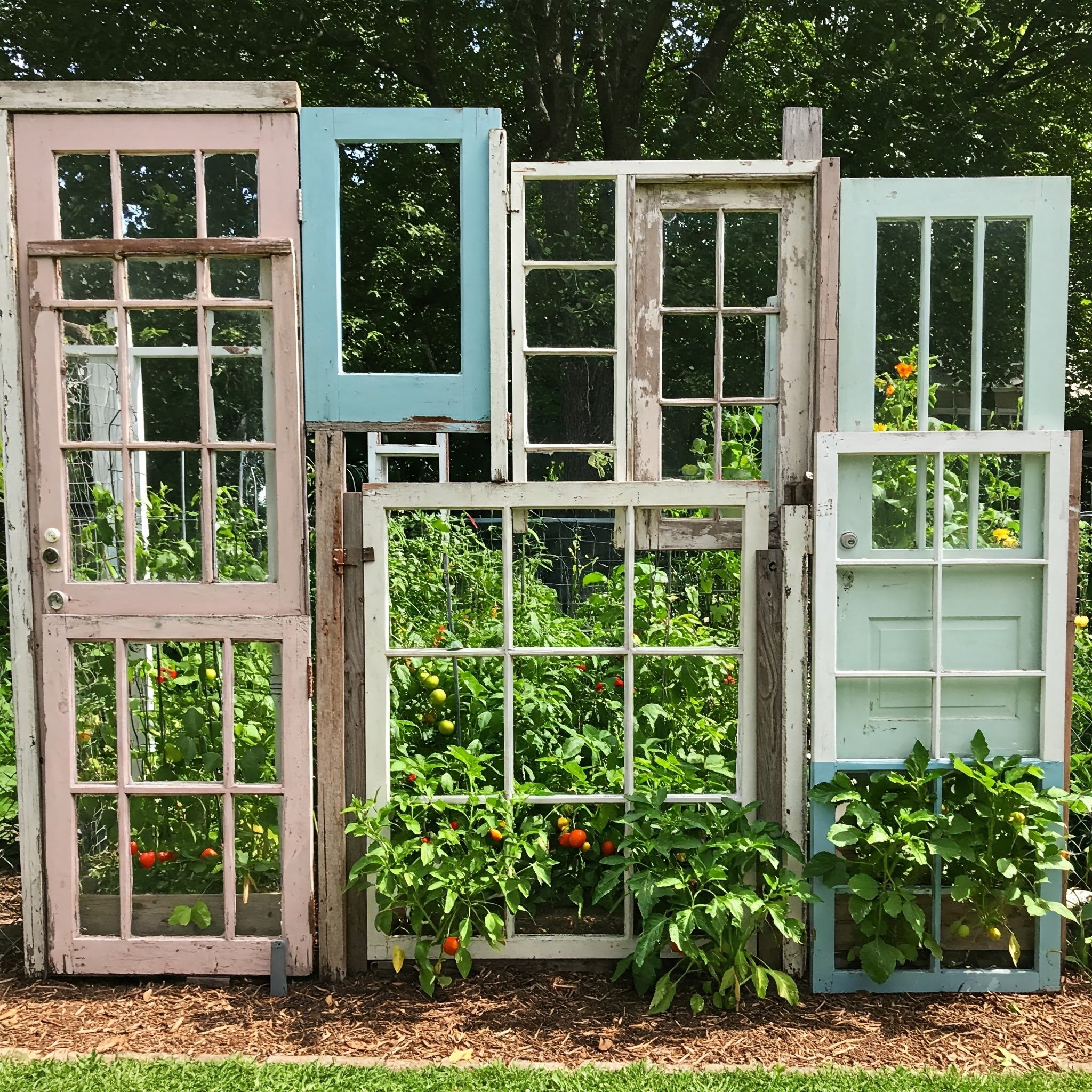15 Vegetable Garden Fence Ideas for Your Yard
Looking to protect your veggies from curious critters while adding a dash of style? Explore these 15 practical yet charming vegetable garden fence ideas that suit any yard and any budget.
Have you ever walked out to your prized vegetable patch only to discover that rabbits, deer, or even your playful pet dog have helped themselves to a midnight snack? It’s frustrating, to say the least. But building a fence around your veggie garden can be about more than just security—it can also serve as a creative focal point that elevates the look of your yard. Whether you prefer a rustic wooden barrier, a sleek modern design, or something more whimsical, the possibilities are nearly endless. And the bonus? A well-chosen fence doesn’t just deter unwelcome munchers; it can also add privacy, shape your garden’s layout, and express your personality. Ready to find a fence that’s both functional and fabulous? Let’s explore 15 inspiring ideas.
1. Classic Picket Fence Charm
It’s hard to deny the timeless appeal of a classic white picket fence. Picture neatly spaced wooden slats encircling your vegetable beds, evoking warm images of quaint cottages and sun-drenched yards. While the picket fence might be more commonly associated with front yard boundaries, it’s equally effective around a veggie patch. The evenly spaced pickets can keep out smaller animals like rabbits while still allowing for adequate airflow and sunlight. Plus, if white isn’t your color, you can stain or paint the wood in any hue that suits your garden’s aesthetic. Although wooden fences do require occasional maintenance—like repainting or sealing to ward off rot or warping—the sense of nostalgic charm they add is often well worth it. For many, a picket fence feels like a gentle nod to simpler times.
2. Sturdy Wire Mesh for Small Critters
If mischievous bunnies and groundhogs are your primary concern, a robust wire mesh fence might be your best friend. While it may not offer the storybook allure of a picket fence, it’s a champion at thwarting smaller invaders that can slip through larger gaps. Mesh comes in various gauges and hole sizes, so you can pick one that suits the sneakiest nibblers in your neighborhood. Pair the wire with wooden posts for a balanced aesthetic that’s both rustic and durable. Burying the mesh a few inches underground can deter digging pests who might attempt an under-fence sneak attack. Yes, it’s a more utilitarian look, but you can soften it by planting climbing flowers or vines along the fence line. The result? A tough perimeter that still feels vibrant and alive.
3. Reclaimed Wood for a Rustic Aesthetic
Have some old barn doors or weathered wooden pallets lying around? Why not give them a second life as part of your vegetable garden fence? Reclaimed wood instantly imparts a sense of rustic warmth and environmental consciousness to your yard. Every scratch, knot, and patch of faded paint tells a story, transforming a simple barrier into a piece of living history. You can assemble planks in a uniform style for a neat, cohesive look, or mix and match sizes and textures for something a bit more eclectic. While reclaimed wood is relatively sturdy, remember to treat or seal it to extend its lifespan. The best part is you’re not just building a fence; you’re also celebrating the charm of imperfection and the beauty of giving materials a second chance.
4. Adding a Splash of Color
Who says a fence has to be neutral or natural-toned? If you’re someone who loves vibrant hues, consider painting or staining your vegetable garden enclosure in a bold color that elevates the entire yard. Imagine a bright turquoise fence as a backdrop for lush green kale, or a cheerful yellow barrier that pairs perfectly with sunflowers and marigolds. Beyond injecting personality, a colorful fence can delineate your garden space, guiding the eye and tying together different elements of your landscape. You can even color-block sections for a more playful twist—say a coral gate leading to a purple side panel. While it might require a bit of maintenance in the form of touch-ups, the payoff is a visually energizing yard that celebrates creativity. After all, your garden should reflect who you are.
5. Bamboo Screens for a Tropical Vibe
If you’re craving a garden feel that transports you to a relaxed getaway, bamboo could be your go-to fencing material. Natural bamboo poles arranged vertically or horizontally create a chic, island-inspired barrier around your veggies. Its slender silhouette can also be a plus if you’re working with limited space, as bamboo fences aren’t typically bulky. Although bamboo won’t stop large, determined animals from forcing their way in, it can keep out smaller critters while serving up plenty of privacy. The golden hue of the bamboo adds a warm, natural contrast to the lush greens of your vegetable patch. Opting for rolled bamboo fencing can simplify installation, and you can reinforce it with wooden or metal support posts for added stability. This breezy, laid-back style suits those who want a relaxing, nature-infused environment.
6. Combining Stone and Wood Elements
Why settle for one material when you can meld the elegance of stone with the warmth of wood? A hybrid fence can do wonders for your yard’s visual appeal and durability. Imagine a short stone wall at the base, topped by wooden panels that enclose your vegetable garden. The stone portion offers a sturdy foundation that can deter burrowing pests, while the wooden upper section might incorporate smaller gaps or decorative accents. If you favor a more organic look, consider using stones of varying shapes and sizes for a rustic vibe. Alternatively, uniform blocks or bricks can convey a contemporary flair. While constructing a stone-and-wood combo fence can be more labor-intensive and potentially pricier, the result often justifies the effort. It’s a statement piece that merges solidity with charm, providing the best of both worlds.
7. Chic Metal Panels and Screens
Sleek metal panels can be a game-changer if you’re aiming for a modern, polished look. Think of shiny steel or corrugated metal sheets that stand tall around your vegetable patch, catching the sunlight in dazzling ways. These fences don’t just scream “industrial chic”; they’re also incredibly low-maintenance—no staining, painting, or intense upkeep required. You can go with full metal sheets for solid privacy, or choose laser-cut designs that let light and air flow through. Integrating decorative patterns—like leaves, abstract shapes, or geometric motifs—adds a personal touch that transforms your fence into a piece of outdoor art. Pair the metal with wooden or concrete posts if you want a softened, more natural finish. It’s a bold move, but one that can set your yard apart in a truly stylish way.
8. Modern Minimalist Lines
You might prefer a fence design that’s subtle but sophisticated, letting your vegetables steal the show. In that case, modern minimalism could be your go-to approach. Picture horizontal wooden slats arranged in neat rows, attached to slender metal posts for a streamlined vibe. The effect is airy but still keeps most critters out, especially if you choose slats that are closely spaced. If you’re into the Zen-like aesthetic, you could incorporate dark-stained wood to contrast the bright greens of your plants. You might even integrate a small, discreet gate that blends seamlessly with the fence, offering both function and form. The real appeal of minimalism is that it’s timeless—your fence won’t go out of style in a year or two, and it complements a wide range of outdoor decor elements.
9. Vertical Garden Fences
Why limit your vegetables to the ground when you can scale the heights? A vertical garden fence is like having a fence and a living wall in one. Using pockets, planters, or even upcycled wooden pallets, you can grow herbs, lettuce, or strawberries along the fence itself. It’s a clever solution for maximizing space, especially in smaller yards or urban settings. Not only does this approach make your fence look lush and green, but it also makes harvesting a breeze—just pick and go. Plus, vertical planting can provide some extra privacy, covering sections of your fence with leafy growth. Be mindful of weight, though; ensure the fence structure can handle the load and that you have an adequate watering strategy, since elevated plants often dry out faster.
10. Using Pallets for an Eco-Friendly Approach
Got pallets lying around from a recent delivery or local warehouse sale? Repurpose them into a budget-friendly vegetable garden fence. Pallets have the bonus of already being somewhat “fence-like” in structure, making them easy to string together with minimal modification. Their raw, unfinished wood offers a rustic vibe, and you can leave the gaps as they are or add extra slats to keep out small critters. This is an excellent approach if you’re partial to DIY projects; a coat of paint or sealant can unify the look and protect the wood from weather damage. Want an extra burst of personality? Stencil designs or encouraging phrases on the slats. You’ll be saving money, reducing waste, and giving your yard a distinctive, homegrown charm that’s hard to replicate with store-bought materials.
11. Deer-Proof Heights and Materials
If your garden is a magnet for deer, you’re likely all too familiar with the heartbreak of a chewed-down veggie patch. Enter the tall, deer-proof fence, which typically stands at least eight feet high to discourage even the most athletic jumpers. Materials can vary—from chain-link to tall wooden boards to high-tensile wire—but the key is maintaining that formidable height. You could even add an outward-angled top portion that makes it trickier for deer to leap in. Some gardeners enhance the fence’s deterrent factor with ornaments like fluttering ribbons or reflective materials that spook would-be diners. While it might feel more imposing than a shorter fence, a well-designed deer-proof solution doesn’t have to be an eyesore. Careful styling, like matching the fence paint to your home’s exterior or incorporating climbing plants, can keep it visually pleasing.
12. Ornamental Ironwork for Vintage Flair
Sometimes you want your fence to feel like a work of art, and ornamental ironwork can make that dream a reality. Curling vines and intricate scrolls in wrought iron can lend a decidedly vintage, elegant flair to your vegetable garden. Picture old-world charm meets practical function—a fence that keeps out bigger critters while welcoming admiration from guests. While wrought iron can be pricey, it’s incredibly durable and can weather the elements for decades with minimal upkeep. If you’re worried about privacy or smaller pests, you could line the lower portion with mesh or acrylic panels. Another option? Pick up antique gates or fence panels from architectural salvage shops and piece them together for a one-of-a-kind barrier. The end result? A romantic, storybook look that feels like stepping back in time.
13. Livestock Panels for Heavy-Duty Protection
For a no-nonsense, durable fence that won’t buckle under pressure, consider livestock panels. Often made of thick, galvanized steel, these panels excel at keeping out not just deer but also more persistent animals like goats or feral hogs. Sure, they might not scream “country chic,” but you can get creative with how you frame or paint them. Wooden posts or a base of stacked stone can soften the industrial vibe, bridging practicality and aesthetics. If you have a large garden space, livestock panels can save you a bundle compared to more ornate fencing. Another perk? Their wide grid pattern still allows for plenty of visibility, so you can admire your tomato vines without a solid barrier in the way. Tough, cost-effective, and straightforward—this style is all about function leading form.
14. Hedges and Living Walls for Natural Boundaries
If you’re drawn to a softer, more organic boundary, why not cultivate a hedge or living wall around your veggie patch? Think of tall, leafy shrubs that enclose your space with greenery, or a row of evergreens that offers year-round protection. While this approach might not thwart every animal (especially those that can burrow underneath or slip through branches), it does serve as a deterrent for casual grazers while creating a tranquil, garden-room feel. You can even grow edible hedges—like berry bushes—to double as a snack source. Bear in mind that living walls demand a fair bit of patience; you’ll need time for the plants to fill out. Regular pruning is essential, too. But in exchange, you gain a fence that’s alive, ever-changing, and oh-so relaxing to behold.
15. Upcycled Doors and Windows for a Whimsical Touch
For gardeners with a penchant for all things quirky and imaginative, why not fashion your fence from old doors or windows? Scour thrift shops, garage sales, or salvage yards for discarded pieces—think French doors with multiple panes or vintage shutters. By arranging them side by side, you create a patchwork fence that exudes whimsy and an artistic spirit. A line of mismatched doors could stand tall, each with its own color and hardware, while windows might form translucent panels that let in extra light. This design won’t offer fortress-level security against larger animals, but you can reinforce gaps with mesh or additional wooden strips. The result is a fence that feels straight out of a fairytale, proving that practicality and imaginative design don’t have to be mutually exclusive.
Conclusion
From modern metal panels to vintage-inspired ironwork, there’s a garden fence style for every preference and practical need. Whether you want to keep deer at bay or simply add a decorative flourish to your vegetable patch, these 15 ideas prove that fencing can be as unique as the garden it protects. By selecting materials, heights, and designs that suit your local environment—and, of course, your personal style—you’ll create a secure enclosure that doesn’t compromise on character. After all, your backyard is an extension of your home—a place where you invest time nurturing fresh produce and a sense of calm. So why not give your veggies the stylish, well-guarded haven they deserve? With a bit of planning, you’ll harvest satisfaction along with those crisp greens.
Read next: 15 Stylish Garden Fence Ideas to Elevate Your Yard
Frequently Asked Questions
1. Which fence material offers the best overall durability?
Galvanized steel, wrought iron, and high-tensile wire are exceptionally durable. Wooden fences can also last long if properly treated and maintained.
2. How tall should a deer-proof fence be?
Aim for at least eight feet. Adding angled tops or deterrent ribbons can further discourage deer from leaping into your vegetable beds.
3. Is it necessary to sink part of the fence underground?
If you have persistent burrowers like rabbits, burying the fence a few inches can help. Consider creating a small barrier underground with wire mesh.
4. Can a living fence really keep animals out?
Living fences or hedges can deter casual grazers but may not be foolproof for all critters. Supplement with mesh or netting if needed.
5. Do I need professional help to install a garden fence?
For simple designs, DIY is entirely feasible. More complex or large-scale fencing, especially with stone or tall structures, may benefit from professional assistance for best results.

